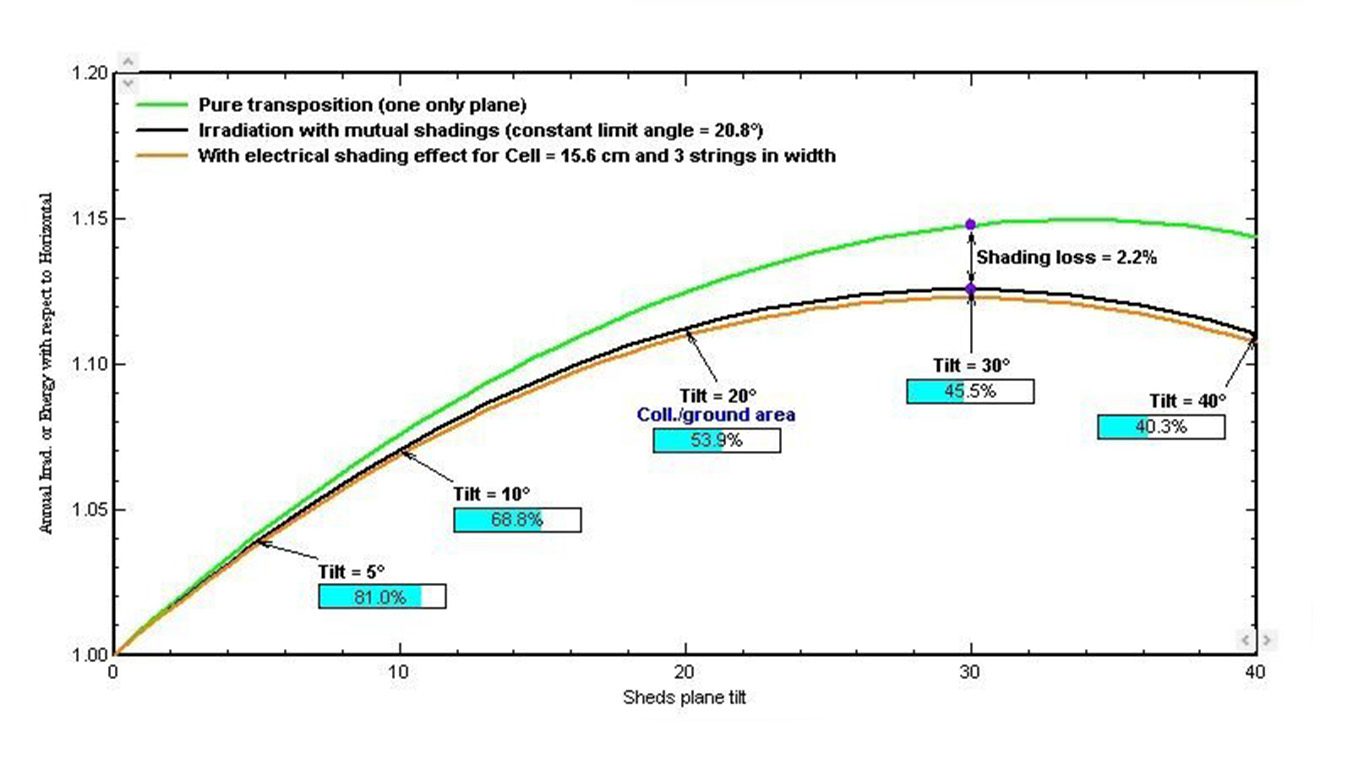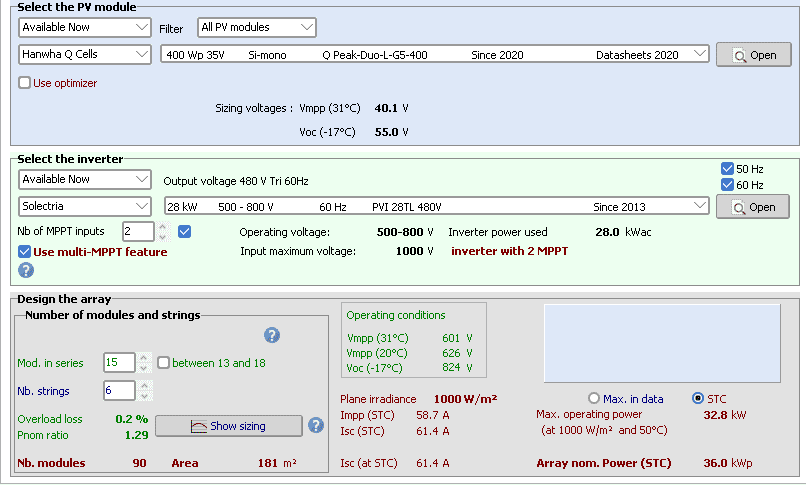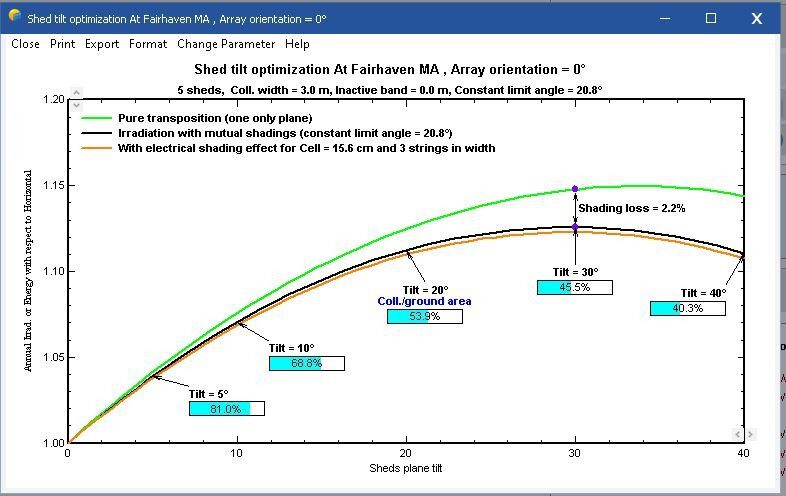
Technical Article
Five Surprising Uses for PVsyst
Since 1992, PVsyst has helped photovoltaic designers and enthusiasts model their projects to an impressive degree. Started by Dr. André Mermoud after researching PV and solar water pump systems, the program has been iterated to include the most up-to-date technologies and is used by large-scale solar developers across the globe.
To young designers, PVsyst itself can be intimidating with how detailed the simulations are. Given that PVsyst is primarily used for full-scale project design and modeling, new users may overlook the bevy of valuable tools at their disposal within the program. In this post, I outline a few unique ways PV designers can use PVsyst.
Product Information
PVsyst’s data library includes modules, inverters, batteries, generators, water pumps, and controllers. The database is backlogged to when the program was first introduced in 2002. PV modules have the most data since they were the principal factor 20 years ago, but the other system components are quickly catching up. Today, even battery components from a variety of top manufacturers are listed. PVsyst is also gracious enough to allow users to export any of the data for personal use.
Large-scale solar project designers will often source their .PAN (module) and .OND (inverter) files directly from their module and inverter suppliers. For those that want information at a glance, PVsyst is a one-stop-shop library for hundreds of products. Access to information that is more detailed than publicly available spec sheets can be great for academic researchers who may not have relationships with manufacturers like project developers do. The details provided are sometimes more extensive than a publicly available spec sheet.
On a side note: A common issue in the PV industry is the standardization of data. The U.S. Department of Energy’s Orange Button Initiative recently achieved a major milestone with its release of the AHJ (Authority Having Jurisdiction) Registry. This website is an effort to standardize how rules and regulations are communicated throughout the country in regard to solar installations. PVsyst does the same with product specifications. While it is not technically an authority, it is the most comprehensive source as of now.
Solar-Specific Data
Product data is one thing, but knowing how the solar resource will behave in a given location can be quite difficult without experience, equipment, or a site visit. Understanding the general dynamics can go a long way in accurately defining the parameters of a PV design project. To help answer these questions, PVsyst provides a few different tools for helping you understand your site. After selecting a project location, you can source meteorological data (typically from MeteoNorm stations); generate an artificial irradiance data for a location; create a horizon map; and much more. PVsyst even offers a comparison tool where a user can compare different sites’ meteorological data directly.

PVsyst can also be a great tool when designing for projects internationally, but it is important to choose the sources that encompass your project’s region. For example, PVGIS data is great for European and African countries, but only has limited data that encompasses Southwest Asia.
Perhaps now more than ever, having the ability to remotely visualize a site using more than just online map data is essential. When site visits and in-person measurements aren’t feasible, the next best thing is to leverage the publicly available solar data in one tool. PVsyst’s impressive database makes this possible.
Stringing Calculator
String sizing is among the most important steps in the PV system design process, and those calculations--while they can be cumbersome--need to be done properly. Yet again, PVsyst’s comprehensive databases are here to help.
Gathering all of the necessary data for the string-sizing calculations can be simplified by using PVsyst’s design tool. You don't have to build your entire project; simply setting the location will gather the correct temperature data. Then, after choosing the components in the “Main Parameters” tab, PVsyst will show the range of modules for string sizing. This is a great place to play around with individual components to assess their impact on the overall system and easily compare alternate designs.

Best of all, the calculations are done in real time, so if you make a mistake, PVsyst is very proactive in letting you know what the issue is. In the case of a serious error, such as undersizing your inverter, it will not let you continue at all.
Optimization
Some PV projects offer designers a few degrees of freedom to optimize the system. But selecting which parameters to optimize for, and quantifying their impact on the PV system can be a difficult and time-consuming endeavor. Luckily for us, PVsyst helps you optimize for many different system parameters.
In each of the design subcategories, there is typically some form of graphical representation for the variable you are changing and what it affects. So, while not explicitly labeled as optimization, you can, for example, adjust the orientation of the array to see the real-time change in potential output. Like string sizing calculations, you do not need to run a simulation to see the changes. In other tabs, such as “Orientation,” there are explicit buttons to go through an optimization process. These buttons generally relate to variables that will dramatically affect the performance of the system.

Education
The last but arguably most important and underutilized way PVsyst can be employed is for educational purposes. So much work has been put into this program and a lot of it gets overlooked by designers as they already have a basic understanding of PV system fundamentals. Taking advantage of the documentation both built into PVsyst and freely available online, you can dive deeper into each and every variable with incredible detail. For example, the section on bifacial models explains each variable that will have to be accounted for and how it affects the system.
Students studying PV in school, industry veterans, and everyone in between could benefit immensely from just walking through the design process. Each piece of the puzzle is presented clearly and intuitively in PVsyst.
PVsyst is an amazing piece of software used by thousands of PV designers worldwide. It's hard to believe such an important cog in the solar-industry machine is led by just 12 individuals. We should thank them each and every day!
If you’re interested in learning more about integrating PVsyst into your design process or need a PVsyst analysis for a PV project, please reach out to our design team at design@mayfield.energy.

